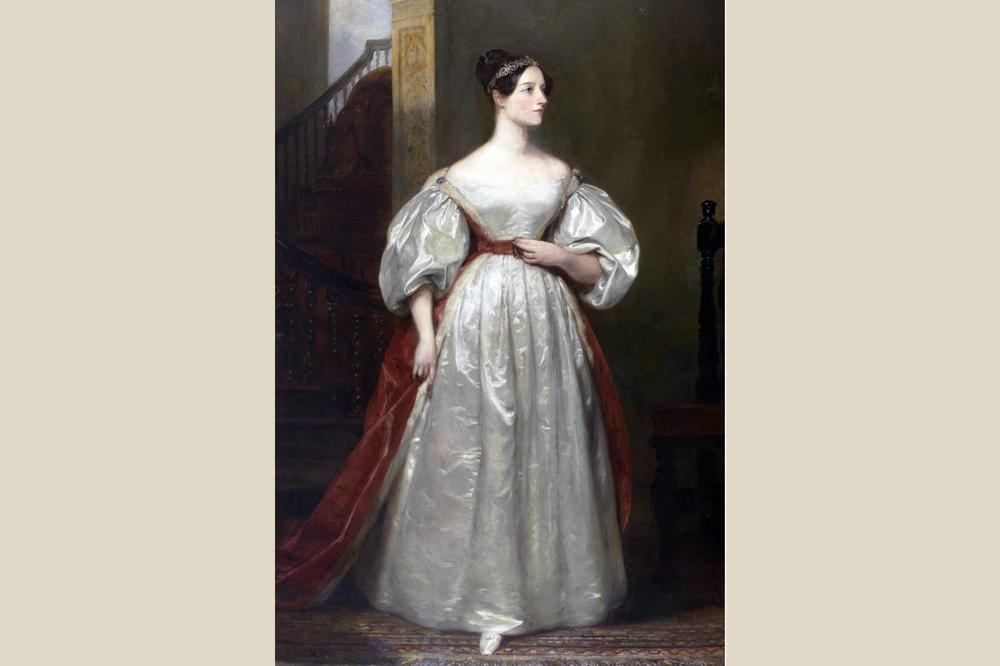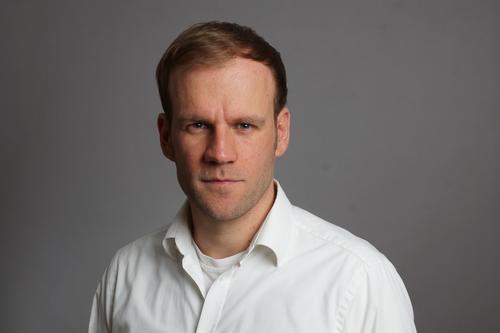Ada Lovelace Center: Programming Pioneer Is Namesake for a New Center at Freie Universität Berlin
Academic coordinator Dr. Dennis Mischke reveals the background to and plans for the new Ada Lovelace Center for Digital Humanities
Aug 15, 2022
Ahead of her time: Ada Lovelace is depicted here in a painting by Margaret Sarah Carpenter from 1836.
Image Credit: UK Government Art Collection; Wikimedia Commons
Dr. Mischke, could you briefly explain what “digital humanities” means?
Digital humanities is an interdisciplinary field and a new area of research where the full spectrum of the traditional humanities meets more IT-related subjects like computer science, not to mention computer linguistics, data science, mathematics, and library and information science.
We want to utilize the benefits of the digital age to gain new insights into our research or put a spin on older research questions in the humanities. With the help of digital and computer processes, we can approach texts in different ways. From this perspective, the field of digital humanities is simply an extension of the practices we’ve always engaged with in the humanities, such as hermeneutics and exegesis.
What is unique about the Ada Lovelace Center for Digital Humanities (ADA) that just opened in June?
The work we do in digital humanities is inherently cooperative and interdisciplinary. That entails a fundamental change in our methodology: digital humanities is one-hundred percent teamwork. Digital research projects require a number of different skills, from developing and implementing software, to data acquisition, to operating IT infrastructures. Of course, not all scholars of the humanities can – or need to – bring all of this expertise and skills to the table. On the flip side, researchers coming from computer science are not just service providers – they have their own questions, methods, and processes and enhance our understanding of our – now digital – objects of research.
One of ADA’s main tasks will be to create a space and a framework for these interactions. The center will be focusing on developing an interdisciplinary lab culture of collaborative research and teaching across disciplinary and departmental borders through different formats.
How is this transforming the humanities?
Well, for one thing, it adds a lot to our toolkit. In the digital age, the digital humanities are becoming more vocal. The movement they are setting in motion has three aspects: The digitalization of objects, the digitalization of methods, and through these two steps, the opportunity to fundamentally reflect on digitalization.
Dr. Dennis Mischke, researcher in English, American studies, and media studies.
Image Credit: personal collection
Does this mean that digital humanities research will eventually turn toward artificial intelligence? After all, AI comes from a very different field – computer science and computer linguistics.
Artificial intelligence and machine learning are taking on an increasingly important role in the digital humanities. We’ve been using high data volumes and machine learning and pattern recognition processes to rethink and review categorizations and classifications. Building interdisciplinary bridges towards speech recognition and natural language processing presents us with new fields of research that are becoming increasingly important.
But we’re also compelled to critically reflect on the purpose and use of technologies. We can’t use computers to answer all of the questions we have in the humanities. Artificial intelligence won’t solve everything.
Won’t the humanities lose part of what makes them unique if they start moving in the direction of the hard sciences?
Yes – and no. An old question is taking on new meaning. This is the question regarding numbers, quantification, and the positivism debate – a question that has once again taken center stage now that we are making use of processes from the hard sciences to perform tasks within research projects that have more complex designs.
The philosopher Sybille Krämer summed it up well: Numbers have always had the right to take their place in the humanities. In the digital humanities we don’t want to throw the baby out with the bathwater or claim that the research questions and methods we’ve had up to this point are now obsolete. What we want to do is to add to and enhance them. We will always need to interpret texts, sources, and contextual information, even if these are now being supplemented with data and new visualizations.
Why did you choose Ada Lovelace as the namesake for your center?
Ada Lovelace, who lived from 1815 to 1852, was a remarkable woman and a fascinating historical figure. She is celebrated as the first computer programmer in history. She was the daughter of the English mathematician Anna Isabella Noel-Byron and the poet Lord Byron, one of the most influential members of the English Romantic movement. Following in her mother’s footsteps as a mathematician, she wrote the first algorithm for Charles Babbage, who invented the first mechanical computer. Today, she is seen as a pioneer of the digital age and of interdisciplinarity between music, poetry, and mathematics, not to mention the digital humanities.
This article originally appeared in German on July 2, 2022, in the Tagesspiegel newspaper supplement published by Freie Universität Berlin.


